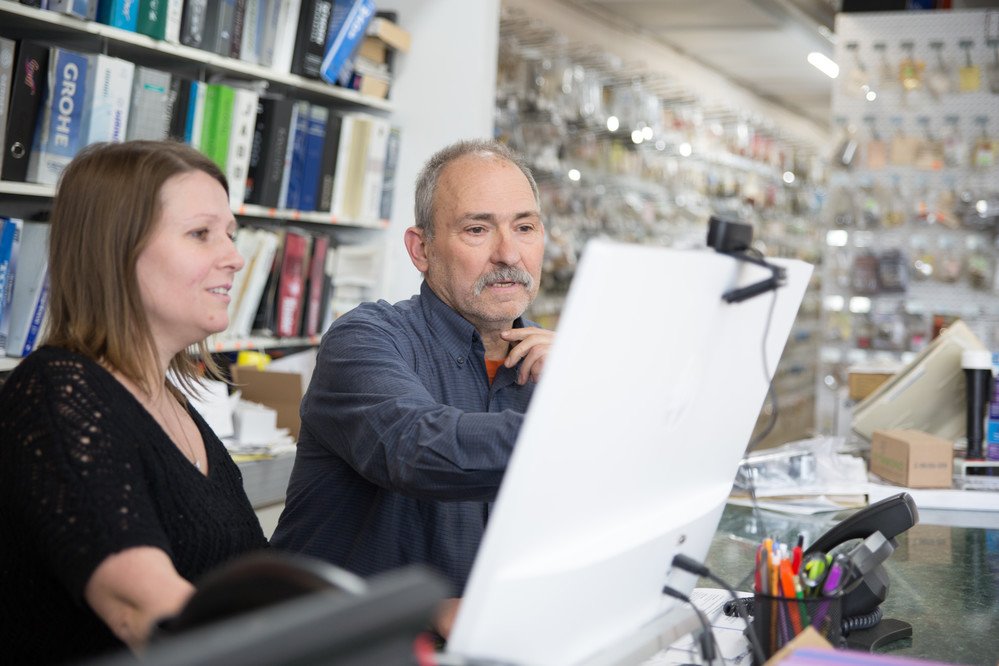Money Matters
The VAT MOSS rule change: Does it apply to you?

The rules changed on 1 January 2015 for sales of digital services to consumers in other EU member states. The old rule was that VAT was based on the country of the business providing the services. The new rule is that VAT is now based on the member state where the customer normally lives.
The theory was that this would stop big businesses from being able to undercut other companies by operating from low VAT rate countries. The rather unexpected side effect is a huge impact on micro businesses that have previously never had to deal with VAT.
What counts as digital services?
Digital services include broadcasting, telecommunications and e-services. The electronic supply of e-services is therefore caught by the change in the rules. HMRC list out some examples of e-services, which include things like:
- Images or text, such as photos, screensavers, e-books and other digitised documents e.g. pdf files;
- Music, films and games, including games of chance and gambling games, and of programmes on demand;
- On-line magazines;
- Website supply or web hosting services;
- Distance maintenance of programmes and equipment;
- Supplies of software and software updates;
- Advertising space on a website.
If the above are electronically supplied – i.e. delivered over the internet with minimal or no human intervention – then they are categorised as “digital services” and are covered by the rule change.
If you sell through another market place e.g. Amazon, the Apple Store, etc., then the VAT issue will be handled by them.
Minimal or no human intervention
So what counts as minimal or no human intervention? An automatic download or email with the content has minimal or no human intervention. If the seller simply attaches the digital content to an email pre-populated with the customer’s details then that is also minimal intervention. HMRC has provided some examples of electronic suppliers and whether or not they are digital services in their policy paper which is well worth a read.
Registering for VAT MOSS if you are under the UK VAT registration threshold
If you are under the UK VAT registration threshold but you sell digital services into other EU member states then you either need to:
- Register for VAT in every member state that you sell into to consumers; OR
- Register for the VAT Mini One Stop Shop (“MOSS”) which will help you to manage the process.
However you cannot register for VAT MOSS without having a UK VAT registration number.
The big recent concession from HMRC is that you can register for VAT in the UK and while your UK sales are under the VAT registration threshold (currently £81,000) you do not need to account for VAT on your UK sales.
They have therefore developed simplified VAT registration arrangements, which allow you to use VAT MOSS to account for the VAT due in other EU member states, while not accounting for (or paying) VAT on sales to your UK customers.
You need to follow these steps to apply for VAT and take advantage of this arrangement:
- Apply for UK VAT
- Search by business activity and then enter digital services in the text box
- Then select “Supplies of digital services (below UK VAT threshold) under MOSS arrangements”
Once you have received your VAT registration number you can then register for VAT MOSS
You can register for VAT MOSS now as the service is ready. You did not need to register by 1 January 2015 and don’t have to register now. You can wait and submit your VAT MOSS application by the 10th day of the month following your first digital services sale. So if you make a cross border digital services sale in February then you have until 10 March to submit your application.
Registering for VAT MOSS if you are over the UK VAT registration threshold
Life is a little less complicated if you are already registered for VAT in the UK. The same timelines apply for registering for VAT MOSS, but it is easier for you to get on and do it now as you already have a VAT registration number.
Reclaiming VAT on your expenses and purchases
If you are below the UK VAT threshold one small upside is that you will be able to reclaim some VAT on your expenses and purchases. Anything that is “wholly attributable” to your cross-border digital services sales can be reclaimed, as can a percentage of anything that partly relates to those sales. So for example if you buy a computer which you use to make all your sales, and 40% of the sales are to customers in the other EU member states, then you can recover 40% of the VAT you paid when you bought the computer.
Completing the returns
Your UK VAT return will need to be completed every quarter even if you are not charging VAT on your UK sales. The VAT return will be very straight forward if you are not charging VAT on UK sales. If you are not reclaiming any VAT (see above) then you simply enter ‘0’ in every box. If you are reclaiming VAT then you should complete boxes 4, 5 and 7.
If you are charging VAT on UK sales then your UK VAT return is completed in the same way as before.
The VAT MOSS return has to be completed once a quarter, and is on a calendar quarter basis (e.g. Jan-Mar, Apr-Jun, Jul-Sep, Oct-Dec) even if your UK VAT return is not. If you register for VAT following the above steps to take advantage of the simplified VAT arrangement then HMRC will ensure that your VAT quarter matches so you can complete both the returns at the same time.
Record keeping
Another very problematic area for micro businesses is the level of record keeping that is now required, and how difficult it will be to obtain the data you are meant to keep. MOSS registered businesses are required to collect and keep two pieces of evidence of where each customer normally lives. HMRC have acknowledged that it is very difficult if you use a payment service provider to obtain payment for your digital service, and have suggested the following two-step approach (taken directly from their policy paper):
Step 1
When the customer places their order ask them to confirm either:
- the EU member state they usually live in
- their billing address
Step 2
When the customer pays for the product using the payment service provider, arrange for that provider to transmit the following two pieces of evidence to you:
- the customer’s billing address
- the country code of the customer’s bank or registered credit card
For confidentiality the payment service provider can remove the house number and street name from the billing address.
If the information on the EU member state where the customer is normally resident tallies,that will be sufficient to define the customer’s location and you can record the details in your accounting records. However, if the information does not tally, you do not need to cancel the sale, but you must contact the customer and ask them to reconcile the discrepancy between the two sources of information.
The data then has to be kept for 10 years after the year of the transaction – so for a transaction in January 2015 the data has to be kept until 31 December 2025.
If you are below the current VAT registration threshold then you may base the customer location on information provided by your payment service provider. This concession only applies until 30 June 2015.
Data protection
Given the above requirements to keep customer records electronically you will need to register as a data controller with the Information Commissioner’s Office (ICO) with an annual cost of £35. You will only have to register with the ICO in the UK.








Ask the author a question or share your advice